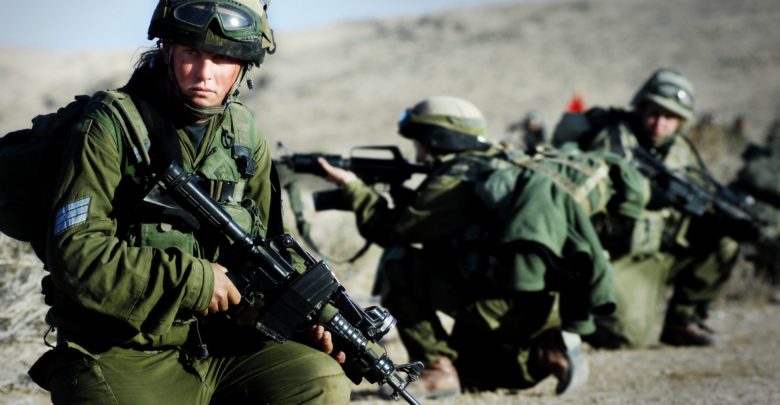Self-reliance has always been a pillar of Israel’s national security ethos. Yet opponents of Israeli sovereignty in the sparsely-populated Jordan Valley seek to downplay regional strategic threats to the Jewish state, arguing that foreign security forces could substitute for the Israel Defense Forces (IDF).
Given past instances, however, Israel understandably is hesitant to trust anyone other than itself to maintain peace along any of its frontiers, let alone the strategically crucial Jordan Valley.
Israeli sovereignty in the Valley is critical to prevent the buildup of covert rocket and anti-tank arsenals in the West Bank, as Hamas has set up in Gaza. It is also vital for stopping terrorists from infiltrating the Jordan-West Bank border and executing attacks from the hills of Judea and Samaria into Israel’s coastal heartland.
These considerations help explain why the 2014 Israeli-Palestinian peace proposal by former Secretary of State John Kerry and retired General John Allen failed, given it raised deep concerns within Israel’s defense establishment.
Among other things, the still-classified “Allen Plan” would reportedly have relied on joint patrols of American soldiers, US-trained Palestinians, and IDF troops – all coordinated with Jordan’s military, to secure the Valley, the ultimate goal being full removal of the IDF.
International Troops in Israel
Capable as American troops are, Israel would have good reasons not to rely on them. The American public is trending away from foreign entanglements, often mislabeled “endless wars.”
The Pentagon is currently eyeing withdrawal of the long-standing American peacekeeping mission to monitor Israel’s border with Egypt. In the current political climate, such sentiments would certainly extend to any American mission securing the Jordan Valley.
Beyond the Allen Plan, it’s also unlikely that international peacekeepers would be motivated, equipped, or supplied with real-time intel to replace the IDF as a guarantor of Israel’s borders. Indeed, historically such foreign units have been unsuccessful or unreliable providing security along Israel’s other frontiers.
Following the 1956 Suez Crisis, the UN deployed armed peacekeeping forces to Sinai. However, they departed as soon as Egypt demanded their exit in May 1967, and weeks later, the Six-Day War erupted.
First Lebanon War
Third-party forces proved equally incapable of bringing stability before, during, and after the First Lebanon War. In the late 1970s, the Palestine Liberation Organization (PLO) began launching terror attacks against Israel from southern Lebanon, prompting the IDF to enter Lebanon. In response, the UN established the United Nations Interim Forces in Lebanon (UNIFIL), which ultimately failed to push the violent PLO out of southern Lebanon. Attacks on Israel continued, leading to Israel’s first Lebanon War in 1982.
During this period, another peacekeeping contingent, known as the Multinational Forces (MNF), was sent to southern Lebanon. On October 23, 1983, the US Marine barracks of the MNF were bombed by Hezbollah, killing 241 American servicemen – the deadliest single-day death toll for the Marines since World War II. Within five months, the MNF withdrew.
After the Second Lebanon War in 2006, the pattern of failure repeated itself in Lebanon. UNIFIL was given a stronger mandate, including helping disarm Hezbollah in southern Lebanon. Yet nearly 14 years later, Hezbollah is far stronger and more capable than it was in 2006 and now boasts an arsenal of up to 150,000 rockets and missiles aimed at Israel.
International Forces in Gaza
The basing of international observers in Gaza was similarly ineffective. In 2005, the European Union sent observers to the Rafah Crossing between Gaza and Egypt to limit the cross-border movement of Hamas terrorists and weaponry. But after announcing a “temporary suspension of operations” once Hamas captured Gaza in 2007, the mission abruptly departed and has never returned.
Most recently, the UN Disengagement Observer Force (UNDOF) – stationed in the Golan Heights on Israel’s Syrian border since 1974 – left the region as Syrian rebel forces and an ISIS affiliate staked out areas near the border and even attacked observers.
UNDOF only returned in August 2018 after Russian and Syrian forces reassumed control over the border region. But now, according to Israeli reports, Iran and its proxies, including Hezbollah, have appeared within the disengagement zone.
The overwhelming takeaway is that reliance on forces other than the IDF to maintain permanent stability on Israel’s long, strategically vital eastern flank is untenable. As a former IDF general has stated, if anything threatens the safety of foreign forces, “No state will accept having its soldiers endanger their lives in place of Israeli soldiers.”
Charles Perkins is the Director for U.S.-Israel Security Policy at JINSA.
Originally published in The Defense Post

